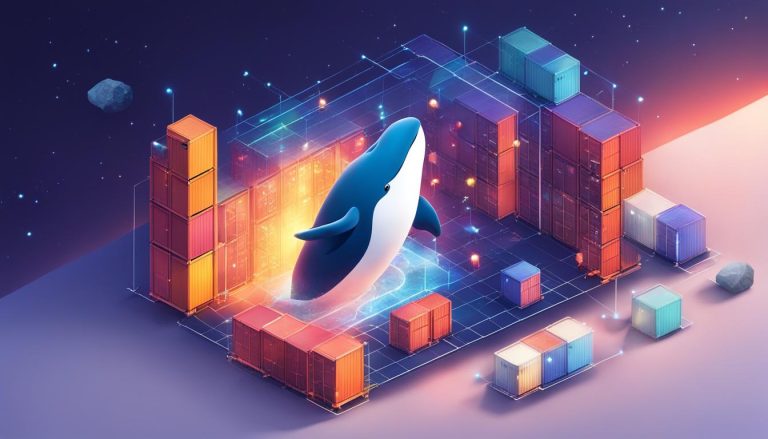Welcome to my article on data integration, where I will explain what it is, how it works, and why it is important for organizations. Data integration is the process of combining data from different sources into a single, unified view. It involves various steps such as ingestion, cleansing, ETL mapping, and transformation. By merging data from multiple sources, organizations can achieve a comprehensive and cohesive dataset that can be used for analysis and decision-making.
Data integration solutions typically consist of a network of data sources, a master server, and clients accessing data from the master server. During the data integration process, clients request data from the master server, which then extracts data from various sources and consolidates it into a unified dataset. This consolidated dataset enables organizations to gain a complete picture of their data and derive valuable insights.
Key Takeaways:
- Data integration combines data from different sources into a unified view.
- It involves steps such as ingestion, cleansing, ETL mapping, and transformation.
- By merging data, organizations can obtain a comprehensive dataset for analysis and decision-making.
- Data integration solutions consist of data sources, a master server, and client access.
- The consolidated dataset obtained through data integration provides valuable insights.
Benefits of Data Integration
Data integration offers numerous benefits for businesses, making it a crucial process for organizations that want to optimize their operations and make data-driven decisions. By combining data from different sources into a single, unified view, data integration improves collaboration and unification of systems within the organization.
“Data integration improves collaboration and unification of systems within the organization.”
When data is integrated, employees in different departments and locations can access and contribute to the organization’s data, fostering teamwork and enabling cross-functional analysis. This shared data environment eliminates data silos and enables a comprehensive understanding of the organization’s operations.
“Data integration saves time and boosts efficiency by automating the process of gathering and preparing data, allowing employees to focus on analysis and execution.”
Another significant benefit of data integration is the time and efficiency savings it offers. By automating the process of gathering and preparing data, organizations can save valuable time and resources. Instead of manually collecting and consolidating data from multiple sources, employees can focus on analysis and execution, improving productivity and driving better outcomes.
Moreover, data integration plays a vital role in improving data accuracy and reducing errors. Through the consolidation and synchronization of data, organizations can ensure that their data is consistent and up to date, leading to more accurate insights and informed decision-making.
| Benefits of Data Integration |
|---|
| Improved collaboration and unification of systems |
| Time and efficiency savings through automation |
| Enhanced data accuracy and reduced errors |
In conclusion, the benefits of data integration are significant for organizations looking to optimize their data management processes and drive better decision-making. By improving collaboration, efficiency, and data accuracy, data integration enables organizations to unlock the true potential of their data and gain a competitive edge in today’s data-driven world.
Types of Data Integration
Data integration encompasses various techniques that allow businesses to combine data from different sources and create a unified view. Understanding the types of data integration techniques is crucial for organizations seeking to optimize their data management strategies.
Extract, Transform, Load (ETL)
One common method of data integration is the Extract, Transform, Load (ETL) approach. In this technique, data is extracted from multiple source systems, transformed into a consistent format, and then loaded into a target system, such as a data warehouse. ETL is often used for batch processing and is suitable for scenarios where data needs to be cleansed, aggregated, and structured before being loaded into a central repository.
Extract, Load, Transform (ELT)
In contrast to ETL, the Extract, Load, Transform (ELT) approach loads raw data into a target system without prior transformation. The transformation is performed within the target system, as needed. ELT is suitable for scenarios where data volumes are massive, and computing capabilities within the target system are sufficient to handle the transformation tasks efficiently. ELT allows for more flexibility in data exploration and analysis since it retains the raw data in the target system.
Real-time Data Integration
Real-time data integration techniques enable organizations to integrate and process data in near real-time or actual real-time. Change Data Capture (CDC) is a technique that captures and propagates data changes as they occur in source systems, enabling real-time updates to the target system. Streaming data integration involves continuously ingesting and processing streaming data from various sources, enabling organizations to make immediate decisions based on the most up-to-date information.
Data Replication
Data replication is a method of synchronizing data between different systems, ensuring consistent and up-to-date data across multiple environments. Replication techniques can be used to achieve data integration between databases, data warehouses, or other systems. By replicating data from a source system to a target system, organizations can ensure data consistency and availability for different purposes, such as reporting, analytics, or backup and disaster recovery.
Data Integration Tools and Process
Data integration tools play a crucial role in streamlining the data integration process. These tools offer a range of functionalities that simplify the ingestion, cleansing, transformation, and mapping of data from different sources. By automating these tasks, data integration tools save time and effort, allowing organizations to focus on analysis and decision-making.
One popular data integration tool is Talend. It provides a comprehensive platform for integrating data from various sources, such as databases, cloud storage, and APIs. Talend offers an intuitive interface and a wide range of pre-built connectors, making it easier to connect and extract data from different systems. Additionally, Talend provides data cleansing capabilities, ensuring that the integrated data is accurate and consistent.
“Data integration tools facilitate the process of combining data from different sources into a unified view, providing functionalities such as data ingestion, cleansing, transformation, and mapping.”
Another essential component of the data integration process is middleware applications. These applications act as mediators, normalizing data and bringing it into a master data pool. They enable seamless communication between different systems, ensuring that data flows smoothly from source to target. Middleware applications also play a vital role in harmonizing different database schemas, making it easier to integrate data from diverse sources.
Data Integration Process
The data integration process involves several steps, starting with connecting the source and target systems. This connection allows data to be routed from the source system to the target system for integration. Once the data is in the target system, it undergoes transformation and mapping to ensure compatibility with the target database schema.
The data integration process can vary depending on the specific requirements of the organization and the types of data being integrated. However, the general workflow typically includes data ingestion, cleansing, transformation, and mapping. These steps ensure that the integrated data is accurate, consistent, and ready for analysis.
| Step | Description |
|---|---|
| Data Ingestion | Extracting data from the source systems and preparing it for integration |
| Data Cleansing | Removing inconsistencies, duplicates, and errors from the data |
| Data Transformation | Converting the data into a format compatible with the target database schema |
| Data Mapping | Aligning the data fields from different sources to the corresponding fields in the target database |
Challenges of Data Integration
Implementing data integration is not without its challenges. Organizations face several obstacles when it comes to effectively integrating data from various sources into a unified view. These challenges can impact the efficiency and accuracy of the integration process, as well as hinder the organization’s ability to make data-driven decisions.
Legacy Systems
One of the primary challenges is dealing with legacy systems. These older systems often lack the necessary markers and compatibility with modern systems, making it difficult to extract and integrate data seamlessly. Organizations may need to invest additional resources in updating or replacing these legacy systems to ensure smooth data integration.
Volume and Variety of Data
The increasing volume, speed, and variety of data also pose significant challenges to data integration. With the rise of big data, organizations must process and integrate vast amounts of information from various sources, including structured, unstructured, and real-time data. This requires robust infrastructure and advanced tools to handle the complexities involved.
Sharing and Collaboration
Sharing data across the organization can also be a challenge in data integration efforts. Vendor contracts and external data sources may limit the level of detail that can be shared, making it difficult to create a comprehensive and unified view of the data. Collaboration among different teams and departments is crucial in data integration, but bottlenecks and lack of coordination can impede the process.
Regulatory Compliance
Maintaining data integration efforts while adhering to best practices and regulatory requirements is another ongoing challenge. Organizations must ensure that data integration processes comply with relevant data protection and privacy regulations. This includes implementing appropriate security measures, obtaining necessary consent for data usage, and monitoring data access to safeguard sensitive information.
Despite these challenges, organizations recognize the importance of data integration and continue to invest in overcoming these obstacles to unlock the full potential of their data.
Conclusion
Data integration is an essential process for organizations to consolidate and harmonize data from various sources into a unified view. By combining data, businesses can achieve improved collaboration, efficiency, and data accuracy, leading to more informed decision-making.
Although implementing data integration brings significant benefits, it also comes with its fair share of challenges. Organizations must carefully consider the best approach, taking into account factors such as data types, systems, analysis requirements, and data update frequency. Legacy systems can pose additional hurdles due to their lack of compatibility with modern systems, making integration more complex.
Additionally, the ever-increasing volume, speed, and variety of data, including real-time and unstructured data, present data integration challenges. External data sources may have limited detail, and sharing data across the organization may be hindered by vendor contracts. Furthermore, organizations must continually maintain data integration efforts and stay up to date with best practices and regulatory requirements.
Despite these challenges, data integration remains an indispensable process for organizations seeking to leverage the power of data. By overcoming these obstacles and successfully integrating data from diverse sources, businesses can gain a comprehensive understanding of their operations and make data-driven decisions that drive success.
FAQ
What is data integration?
Data integration is the process of combining data from different sources into a single, unified view.
What are the benefits of data integration?
Data integration improves collaboration, saves time and boosts efficiency, and enhances data accuracy for better decision-making.
What are the types of data integration?
The types of data integration include ETL (extract, transform, load), ELT (extract, load, transform), real-time data integration (CDC and streaming), and data replication.
What are data integration tools?
Data integration tools facilitate the data integration process by providing functionalities such as data ingestion, cleansing, transformation, and mapping.
What are the challenges of data integration?
Challenges of data integration include determining the best approach, dealing with legacy systems, managing the volume and variety of data, and maintaining integration efforts.
Jana is a public relations specialist and writes about all kinds of software products that make our life easier.


